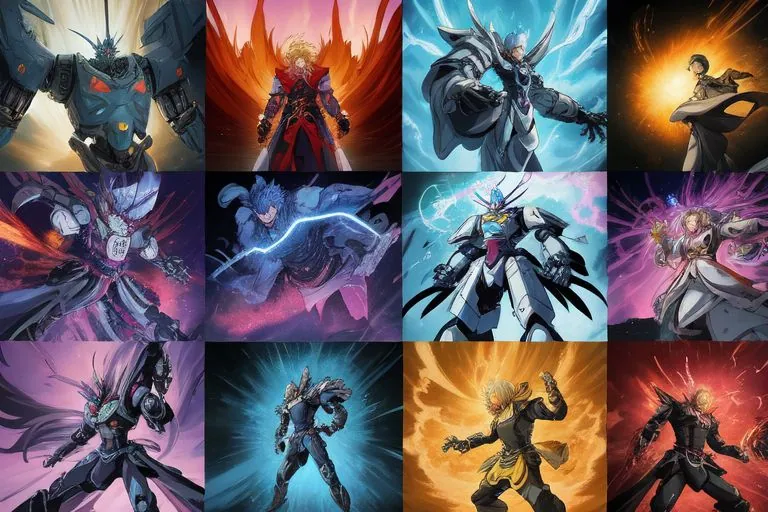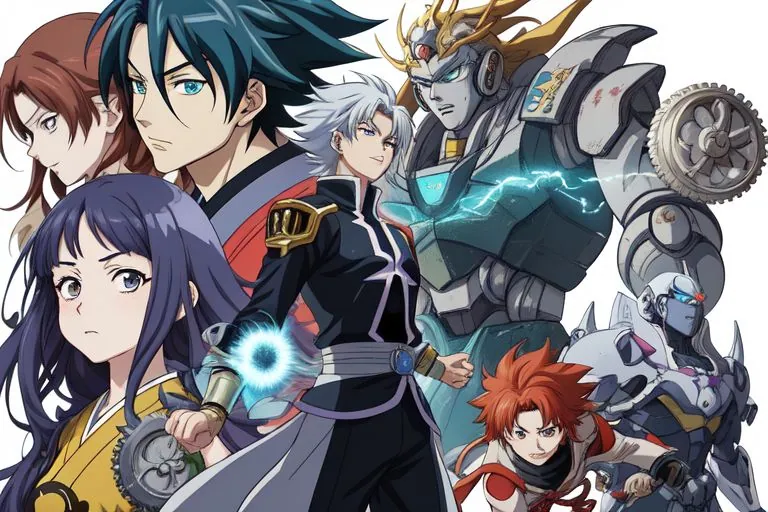
Introduction
Anime has become a global cultural phenomenon, captivating millions with its vibrant art style, compelling stories, and unique characters. What began as a niche interest in Japan has evolved into an international entertainment powerhouse. From children to adults, anime appeals to all ages and interests, transcending geographic boundaries and language barriers.
But what exactly makes anime so appealing? In this article, we’ll dive into the anime genres, explore its culture, examine popular anime series, and take a look at the intricate anime production process that brings these beloved stories to life.
What is Anime?
At its core, anime refers to a style of animation that originated in Japan and is characterized by colorful visuals, unique characters, and fantastical storytelling. While it encompasses all forms of animated media, the term “anime” is commonly used to describe Japanese animated shows, films, and manga (Japanese comic books).
Anime spans a wide range of genres and appeals to audiences of all ages. Whether you’re into action-packed adventures, heartwarming dramas, or futuristic sci-fi tales, anime offers something for everyone. Let’s dive into the major anime genres that have shaped the industry.
Anime Genres: A Diverse Range of Stories

Anime is known for its vast variety of genres, each offering a different experience. These genres cater to various tastes, from high-energy action to thoughtful drama. Here are some of the major anime genres that dominate the landscape:
1. Shonen (少年)
Shonen anime is primarily targeted at young male audiences, typically between the ages of 12 and 18. These series often feature intense action, adventure, and themes of friendship, rivalry, and personal growth. Some of the most iconic shonen anime include Naruto, Dragon Ball Z, and My Hero Academia. These shows emphasize the journey of a young hero striving to become stronger, often through battles or challenges.
2. Shojo (少女)
Shojo anime, on the other hand, is aimed at young female audiences and typically focuses on romance, character relationships, and emotional development. The art style is often more delicate, and the themes revolve around love, friendship, and self-discovery. Popular examples include Sailor Moon, Fruits Basket, and Cardcaptor Sakura.
3. Seinen (青年)
Seinen anime targets adult male audiences, usually 18 and older. These series are often more mature in their themes, featuring darker narratives, complex characters, and psychological elements. Ghost in the Shell, Berserk, and Tokyo Ghoul are prime examples of seinen anime, offering deep storytelling and often exploring philosophical or societal issues.
4. Josei (女性)
Josei anime is designed for adult women, often showcasing more realistic and mature relationships. The themes are more grounded in reality, focusing on the daily lives, challenges, and relationships of women. Josei anime like Nana and Paradise Kiss provide a more mature perspective on love and life, appealing to a slightly older demographic than shojo.
5. Mecha
Mecha anime revolves around giant robots and technological warfare. These shows often explore futuristic settings, politics, and the human-robot relationship. Mobile Suit Gundam, Neon Genesis Evangelion, and Code Geass are renowned examples that have not only defined the genre but also influenced popular culture globally.
The Vibrant Anime Culture
Beyond the screen, anime has given rise to a unique culture that has grown into a global subculture. This culture is characterized by its devoted fans, passionate creators, and vibrant community-driven activities.
1. Otaku Culture
In Japan, anime fans are often referred to as “otaku,” a term that signifies a deep, obsessive love for anime, manga, and related media. While the word “otaku” may have a somewhat negative connotation in Japan, the global anime community has embraced it as a badge of pride. Otaku culture is about more than just watching anime, it’s about immersing yourself in the world of anime, from collecting merchandise to creating fan art and cosplay.
2. Cosplay
Cosplay, short for “costume play,” is a key component of anime culture. Fans dress up as their favorite anime characters, often participating in conventions or creating content online. Cosplay allows fans to embody their favorite characters and celebrate their love for specific anime series.
3. Anime Conventions
Anime conventions, such as Anime Expo in Los Angeles and Comiket in Tokyo, have become major events where fans can meet like-minded individuals, purchase anime-related goods, and even interact with the creators behind their favorite shows. These conventions often feature panels, screenings, and cosplay competitions, offering a place for fans to immerse themselves fully in the anime culture.
4. Fandom and Online Communities
The rise of the internet has given anime fans a global platform to interact with one another. Websites like Reddit, MyAnimeList, and various fan forums allow fans to discuss their favorite anime, share fan art, and analyze episodes in-depth. Online communities have played a significant role in the growing popularity of anime around the world.
Popular Anime: Series That Defined the Industry
Certain anime series have reached legendary status, becoming cultural touchstones that have shaped the global entertainment landscape. Here are a few popular anime that have left an indelible mark on anime fans worldwide:
1. Naruto / Naruto Shippuden
Naruto follows the journey of Naruto Uzumaki, a young ninja with dreams of becoming the strongest leader in his village. The series is known for its action-packed battles, character development, and themes of friendship, perseverance, and never giving up. Its sequel, Naruto Shippuden, continues Naruto’s story and explores more mature themes.
2. One Piece
One Piece tells the story of Monkey D. Luffy and his quest to find the legendary One Piece treasure, becoming the Pirate King. With its epic world-building, unforgettable characters, and high-stakes adventure, One Piece is one of the longest-running and most beloved anime series in history.
3. Attack on Titan
Set in a world where humanity is on the brink of extinction due to giant humanoid creatures called Titans, Attack on Titan explores themes of survival, freedom, and sacrifice. Its intense action sequences and plot twists have made it a modern classic.
4. My Hero Academia
In a world where almost everyone has superpowers, My Hero Academia follows Izuku Midoriya, a powerless boy who dreams of becoming a hero. With its exploration of heroism, self-worth, and teamwork, this series has become a cultural phenomenon in the superhero genre.
5. Demon Slayer: Kimetsu no Yaiba
With stunning animation and a powerful story of family and vengeance, Demon Slayer quickly became a global hit. The series’ breathtaking visuals and emotional depth have earned it numerous accolades and a massive following.
Anime Production: Bringing Stories to Life
Behind every successful anime is a complex production process that involves numerous talented individuals working together to bring a story to life. The anime production process is multifaceted, with several key stages that ensure the final product is of the highest quality.
1. Pre-Production
The journey of creating an anime begins in the pre-production phase, where the concept, script, and storyboard are developed. Writers, directors, and producers collaborate to create the foundation of the series. Character design and world-building are also done during this phase, with artists sketching the visuals and defining the look of each character.
2. Animation
The animation process itself is labor-intensive. Traditional hand-drawn animation is still used for many series, though digital animation has become increasingly prevalent in recent years. Each frame of the animation is meticulously crafted, often by teams of animators working in tandem. Some studios, like Studio Ghibli, are known for their attention to detail and hand-drawn techniques, while others embrace cutting-edge digital tools.
3. Voice Acting (Seiyuu)
Voice acting, or “seiyuu,” is a crucial aspect of anime production. The voice actors bring the characters to life, giving them unique personalities and emotional depth. Seiyuu often undergo rigorous training to master the art of voice acting, and their performances can elevate a show’s impact.
4. Music and Sound Design
Anime soundtracks play a vital role in setting the tone of a show. Composers create music that complements the emotional beats of the story, while sound designers work on effects that bring the world of the anime to life. Iconic composers like Yoko Kanno and Joe Hisaishi have contributed some of the most memorable anime scores.
5. Post-Production
After animation and voice recording, the final touches are added during post-production. This phase involves editing, sound mixing, and finalizing the visuals. Once completed, the anime is ready for release, whether in theaters, on television, or through streaming platforms.
Conclusion: The Ever-Growing World of Anime
Anime is more than just a form of entertainment; it is a cultural movement that has influenced millions worldwide. From the wide variety of anime genres to the rich anime culture that supports its fans, the world of anime continues to expand and evolve. The popular anime series that have captured global attention, along with the anime production process that brings these stories to life, showcase the immense creativity and dedication of everyone involved.
As anime continues to grow in popularity, it will no doubt shape and inspire future generations of creators and fans. Whether you’re a lifelong otaku or just discovering anime for the first time, there’s always something new to explore in this vibrant and diverse world.